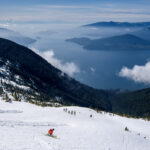It can be hard to convince my friends to ski with me in Manning Park. There’s a bit of uncertainty involved.
“There’s skiing? Is the snow any good?” “I don’t care about the views. Isn’t it all flat? Can’t we just ski the Duffey?”
This past winter, I think I’ve slowly convinced a few of my friends that if you go to the right places, pick the right aspects and have a little luck with the weather, you can find some incredible skiing with nobody else around. Writing about this here might change the lack of skiers, but it’s a secret too good to keep!
Frosty Mountain
With clear weather after the New Year and stable avalanche conditions, low danger at all elevations, I thought it would be fun to repeat a ski line that I skied with Scott off
Frosty Mountain, the north face of the east summit.
For those unfamiliar with Frosty Mountain, it can get confusing when describing the skiing, so I’ll use the google image below to try and clarify that (looking south).
There are two summits of Frosty, the east summit which is the standard summit, and the higher west summit. There are two trails up to the east summit, either the Frosty trail from Lightning Lakes or the Windy Joe trail. There are two main ski lines off the east summit, the northeast face (orange line), or the steeper north face (blue line). The west summit has numerous steep couloirs off the east face and is usually approached in the winter by heading straight up from Flash Lake via an open slide path (red line). With enough snow coverage, you can ski down Frosty Creek to Lightning Lakes (blue line).

It turns out that it’s not so hard to convince people to go skiing and we started off as a group of seven, Bram, Lena, Nick, Ben, Meredith and Tim. We parked at the Lightning Lake day-use area and skied across the frozen Lightning Lakes, towards the Frosty trail switchbacks. There was some deadfall, but thanks to some effort earlier in the year, it wasn’t bad. After the switchbacks, the route follows the flat ridge top with some minor micro terrain for a few kilometres until it opens with fine views of the Pasayten wilderness, both summits of Frosty Mountain and the larch forest.
There are two options to gain the ridgeline, either going left and ascending the west wind-scoured slopes or a steeper pitch on the north ridge. There are usually large cornices at the head of the basin so going that way doesn’t work. We decided to boot pack up the mixed snow and rock slope. After crossing some more rocks, the skis went back on and we skinned up to the east summit. The view of the North Cascades from the ridge line is quite something, with the rugged summits of Castle Mountain and Winthrop Peak and others catching your eye. I went first down the northeast face, finding smooth stable powder all the way down. The others followed me down, happy that the snow quality was better than imagined. This time, we decided to just skin and then boot pack back up the north ridge.
Next up was the north face. dropping directly down into Frosty Creek. When I skied this six years ago with Scott, the snow was firm and the turn quality went from ok to poor as we dropping into the avalanche debris in the apron below. This time, the snow quality was just steep chalky powder. I went first again, finding good snow all the way down, being careful in a few spots when I thought I might uncover some rocks. The snow quality only deteriorated near the bottom, with a sun crust forming due to the lower angle.
Down in Frosty Creek, there were two options now. Either ski out Frosty Creek or climb up towards the ridge line and ski the Flash Lake slide path. I figured we had just enough daylight to get up to the top of the run. Ben and Meredith decided to skip on the extra adventure and headed out Frosty Creek while the rest of us starting climbing up again. This route is only recommended during stable snow conditions, as you have to climb up and across two avalanche paths. We hit the ridge crest at ~2000m. We started the descent at 4pm with the last of the daylight. We followed earlier tracks down the slide path. The turns are good near the top, but the tree density increases lower down on this 750m run. The last 300m, from the bottom of the slide path down to the lake, was less enjoyable. Everybody was introduced to the other kind of Manning Park tree skiing, the tight dead-fall ridden steep forest with branches ready to catch on every part of your body. I sideslipped all the way down to the lake.
If the conditions are good, you can skate across Flash Lake and Lightning Lake. But there was 20cm of heavy snow on the lake, so we skinned along Flash Lake, and then onto the trail in the forest as the section between the lakes was not frozen. Headlamps went on and we slogged the rest of the way back to the Lightning Lake day area. Bram drove back to Vancouver, while the rest of us stayed at the winter camping spot at the Lone Duck campsite, further to the west. There is a partially enclosed wood shelter here, with a stove (bring your own wood), picnic tables and a cooking area inside.

Looking down at the lakes from the trail
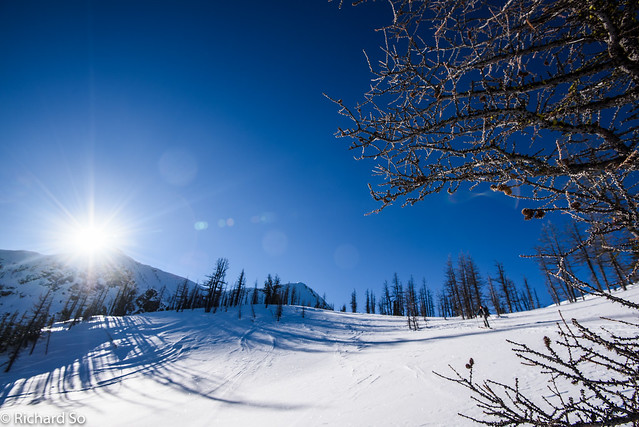
Larch forest in the alpine

Couloirs off the West summit

Pick your line.

Calzone time

Bootpacking up the rocky slopes. Nick skis pointing up at our first ski line.

East summit

Pasayten Wilderness
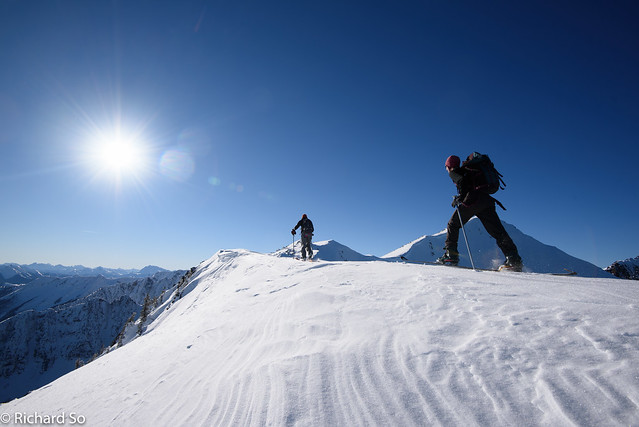
Ridge walk to the summit

View of Castle Peak across the border

Couloir filled Castle Peak

Windswept up here. The Bivouac.com description for Frosty Mountain describes the skiing as poor. Certainly on these slopes.

Heading up

Great snow for the steeps

Bram cruising down

Back up for Round 2

Picket Range

Looking down the north face into Frosty Creek

Dropping into the north face

The tracks off to the right are Tim’s.

Matchsticks

Silvertip Mountain
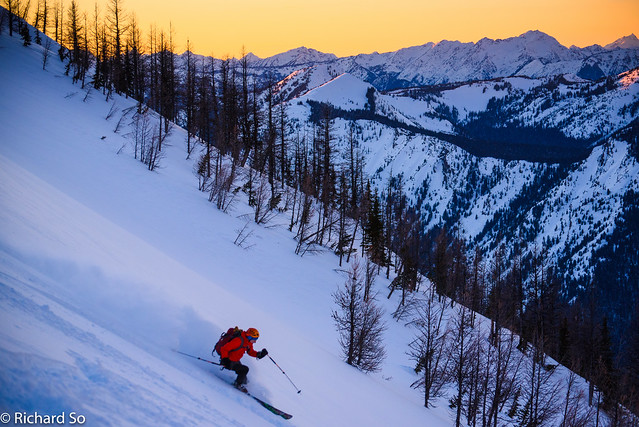
Bram skiing the Flash Lake slide path

Nick skiing the Flash Lake slide path

Frozen Lightning Lake

Frozen Lightning Lake

Looking back up at Frosty Mountain, near Frosty Creek
Snow Camp and Lone Goat Mountain
The next day, Nick Lena Tim and I headed off to ski the Skyline Trail. Tim once told me that he would never ski the Skyline trail because of the awful forest and that it’s just not good for skiing. But I don’t think he knew about the runs off Snow Camp Mountain or the gullies off Lone Goat Mountain that make a little bit of hard work worth it.
We parked at the Manning Park ski area and then glided down to the base of the bunny hill where skins went on. We crossed the creek on a snow bridge just west of Shadow Lake. There was a slight inversion, with cold dry powder in the valley bottom. This is the winter route as described in Baldwin’s book. After crossing the creek, begin climbing in a gradual traverse, ascending south towards the ridge. After 500ft of steep forest, the angle eases off into an old burn. Continue traversing south towards Despair Pass, losing elevation along the way. Not the best skiing with skins on, but it works.
In the summer, the Skyline trail follows the ridge crest, but I found that it was easier to stay north of the ridge crest. The ridge crest was filled with undulating snow deposits and cornices, forcing you to go up and down if taking that route. We skied a short open slope on the northeast side of Snow Camp Mountain. Nick and I skied it twice, too good not to! There was talk of skiing laps here, but I wanted to go over to Lone Goat Mountain today. The skiing was good here, but what if it was even better over there? Well, the next run was awesome. We skied the north facing avalanche path west of Snow Camp Mountain, dropping down to 1550m. We contoured through the forest and then worked out way south back up to the open slopes below Lone Goat Mountain.
I’ve looked at this pyramidal summit from the ski area many times, a perfect summit with equally spaced gullies dividing up the northeast face. The runs are up to 300m long here. We worked our way up to the summit. Nick skied the first chute off the summit and we watched his turns. The snow was firmer due to debris and sluff halfway down. Good thing there’s another line! I skied back down the ridge line and dropped into the next untracked couloir. The snow was excellent all the way down. Tim and Lena did the same, dropping into their own couloir, each one further down the ridge line. We were the bottom at 3pm. I had no idea what the ski out would be like but the skiing was too good not to repeat. So up we went again. And down my own personal couloir again.
By 4pm, we started skiing out from the flat forest. This might have been Tim’s first and only ski weekend this year, but that didn’t stop him from breaking trail through the open forest. It went something like this, Tim broke trail, I would navigate with my phone, and Nick and Lena occupied themselves by knocking over as many snowy trees as they could. Basically, you want to stay on the east side of the main creek, crossing several minor creeks along the way. Our route took us too far west at one point, leaving us exposed above the Nepokemum bluffs. It’s quite obvious if you look on the contour lines or google earth. A kilometre to the east, we crossed Shadow Creek again and then made the final climb back up the bunny hill to the car. Back at the cars well after sunset. That’s what happens when you go exploring on skis in the middle of winter.
So there you go, two interesting day trips at Manning Park. It might not be the easiest skiing to get to, but I think the rewards are well worth the extra effort. If you’re looking for something a little different, check it out!
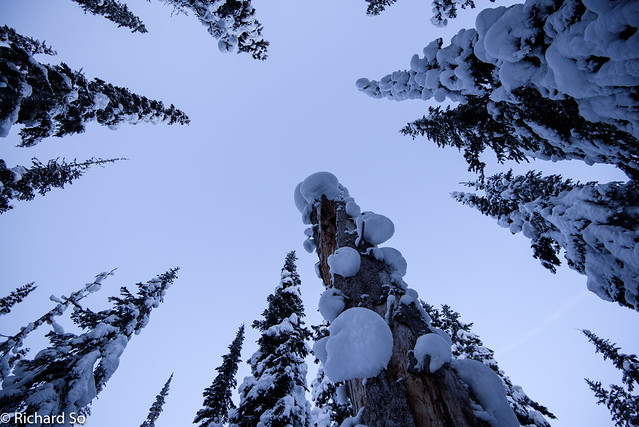

Acrobatic skinning techniques, an advanced skill honed after many years in the Coast Range

Entering the old burn

South Hozameen

Lone Goat
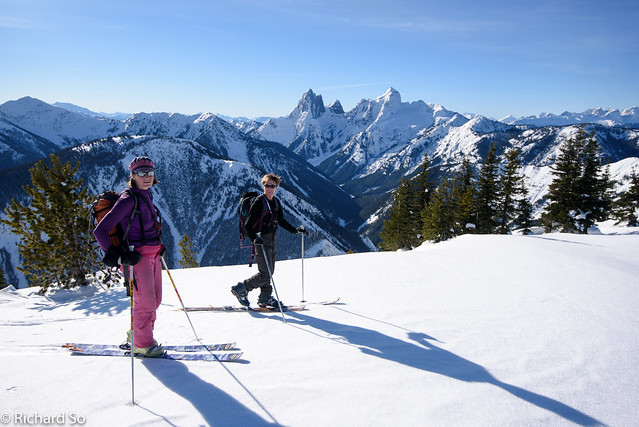
Lena Tim, and the Hozameens

Up towards Snow Camp Mountain

The view from here is just spectacular

As were the turns!

Lap 2

Good quality snow

Nick getting close to the edge… We dropped off to the far side of the ridge, rather than going left to the Lone Goat col
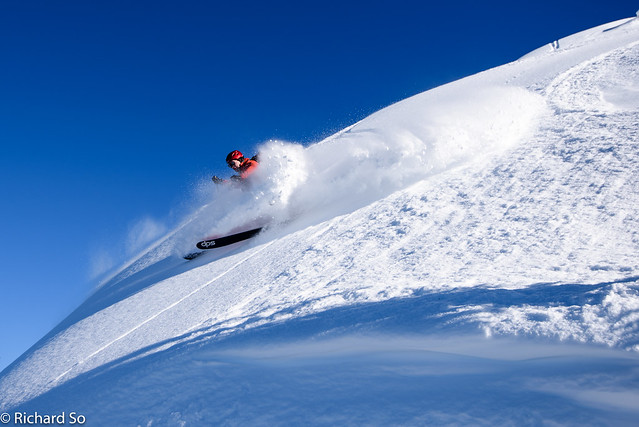
Powder!

And back up onto Lone Goat. You can see the valley inversion with the white trees below

Earlier turns
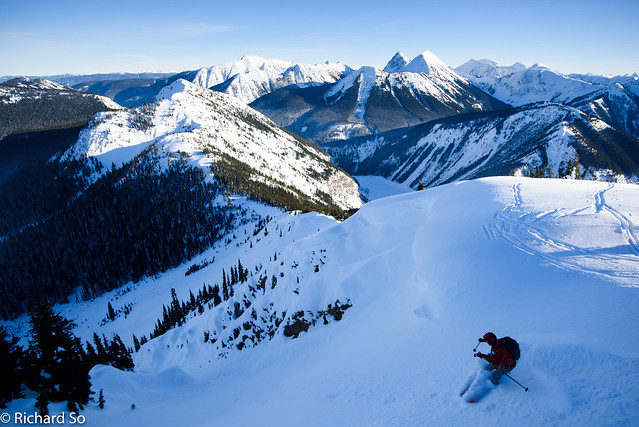
Current turns
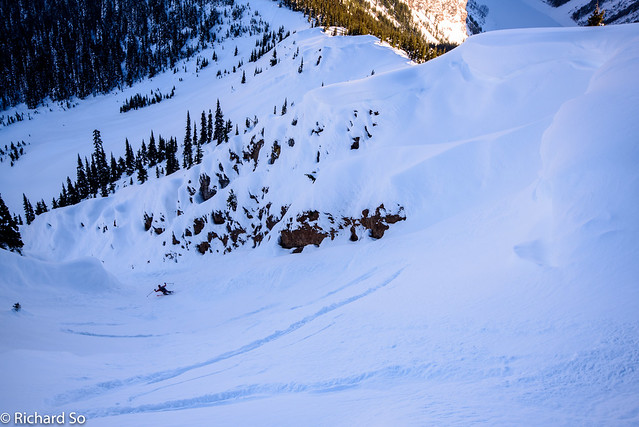
Steep turns

My turns

Heading back up to Lap 2

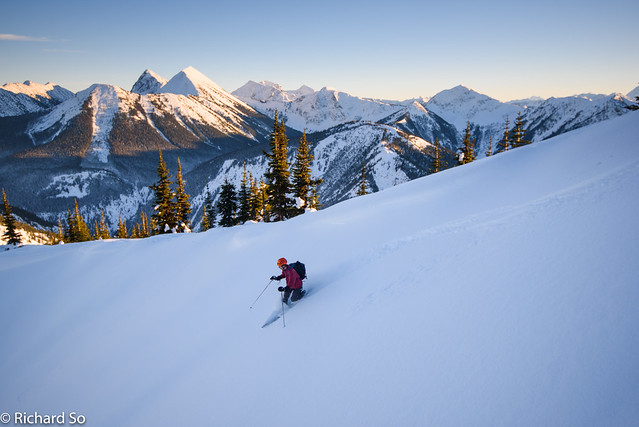
Tim drops the knee on Lone Goat

Heading back down
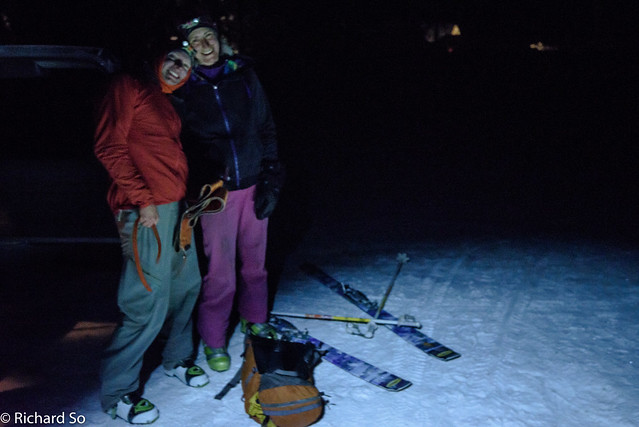
You can always count on these two for full-value skiing, from sunrise to sunset and beyond.





















































